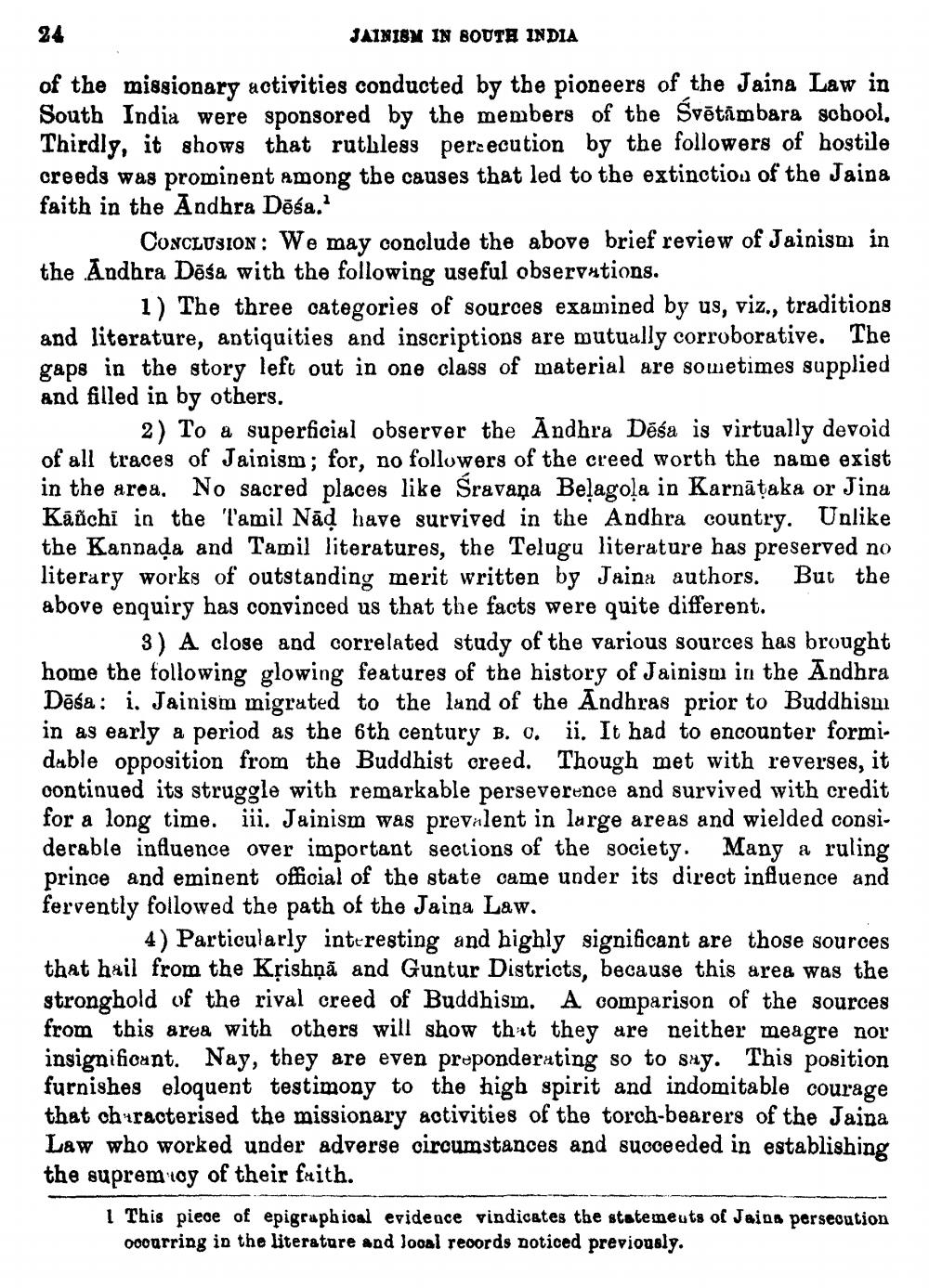________________
JAIXIBM IN BOUTA INDIA
of the missionary activities conducted by the pioneers of the Jaina Law in South India were sponsored by the members of the Svētīmbara sobool. Thirdly, it shows that ruthless pereecution by the followers of hostile creeds was prominent among the causes that led to the extinction of the Jaina faith in the Andhra Dēša.
CONCLUSION: We may conclude the above brief review of Jainism in the Andhra Dēša with the following useful observations.
1) The three categories of sources examined by us, viz., traditions and literature, antiquities and inscriptions are mutually corroborative. The gaps in the story left out in one class of material are sometimes supplied and filled in by others,
2) To a superficial observer the Andhra Dēša is virtually devoid of all traces of Jainism; for, no followers of the creed worth the name exist in the area. No sacred places like Sravana Belago!a in Karnātaka or Jina Kāñchi in the l'amil Nād have survived in the Andhra country. Unlike the Kannada and Tamil literatures, the Telugu literature has preserved no literary works of outstanding merit written by Jaina authors. But the above enquiry has convinced us that the facts were quite different.
3) A close and correlated study of the various sources has brought home the following glowing features of the history of Jainism in the Andhra Dēša: i. Jainism migrated to the land of the Andhras prior to Buddhism in as early a period as the 6th century B. 0. ii. It had to encounter formi. duble opposition from the Buddhist creed. Though met with reverses, it continued its struggle with remarkable perseverence and survived with credit for a long time. iii. Jainism was prevalent in large areas and wielded considerable influence over important sections of the society. Many a ruling prince and eminent official of the state came under its direct influence and fervently followed the path of the Jaina Law.
4) Particularly interesting and highly significant are those sources that hail from the Krishņā and Guntur Districts, because this area was the stronghold of the rival creed of Buddhism. A comparison of the sources from this area with others will show that they are neither meagre nor insignificant. Nay, they are even preponderating so to say. This position furnishes eloquent testimony to the high spirit and indomitable courage that ch'racterised the missionary activities of the torch-bearers of the Jaina Law who worked under adverse circumstances and succeeded in establishing the supremtoy of their faith.
1 This piece of epigraphical evidence vindicates the statemeuts of Jains perseoution
ooourring in the literature and looal records noticed previously.




